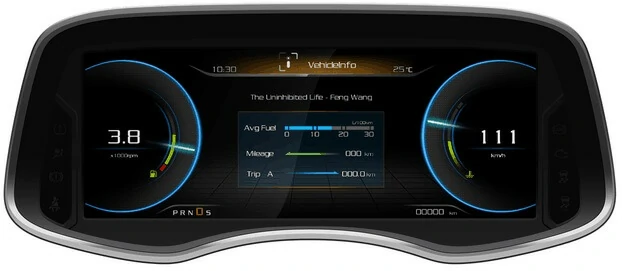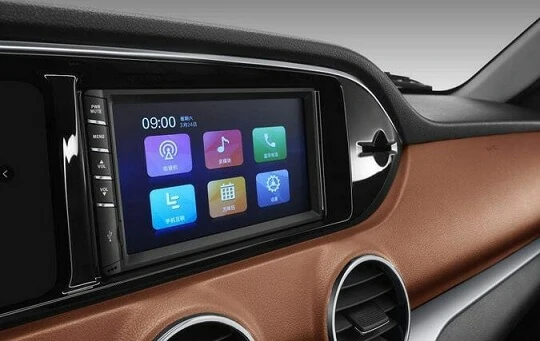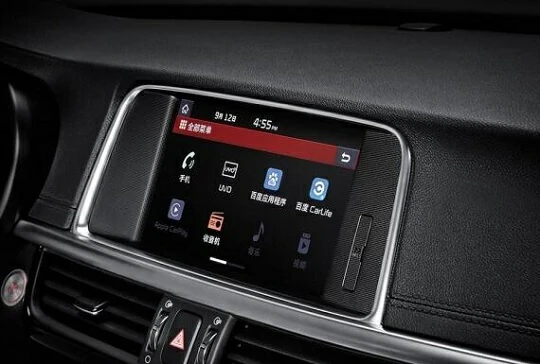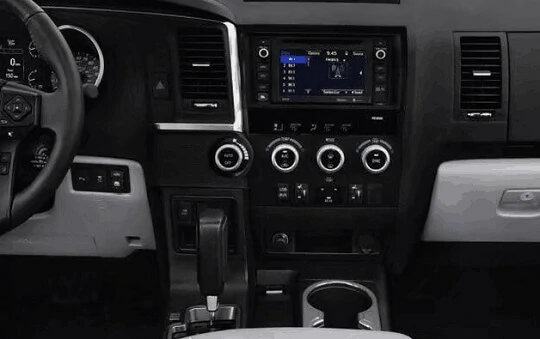Onboard TFT LCD displays the screen in our life more and more applications, so do you know what the requirements of the car LCD screen? The following is a detailed introduction:
1. Why should the Onboard TFT LCD displays screen be resistant to high and low temperature
First of all, the working environment of cars is relatively complicated. In the morning, in the evening, in the summer, in the autumn and in the winter, in different parts of the world, cars are required to work. Cars are often exposed to the sun in the summer, and the cabin temperature can reach more than 60 degrees. The electronics inside must be able to work properly with the car. In some northern areas, the winter is so cold that regular LCD screens don’t work. These need to resist the high and low temperature of the LCD screen, for the owner to display driving information, escort.
2. International safety test standards for Onboard TFT LCD display screen
According to the national standard, all parts of the car need 10 days of testing, can completely detect the performance of the test device.
For on-board LCD screens, the ISO automotive electronic reliability test and related standards for LCD screens are as follows:
- High-temperature storage test temperature: 70℃, 80℃, 85℃, 105℃, 300 hours
- Low-temperature storage test temperature: -20℃, -30℃, -40℃, 300 hours
- High temperature and high humidity test operation: 40℃/90%R.H.(no condensation), 300 hours
- Operating temperature at high temperature: 50℃, 60℃, 80℃, 85℃, 300 hours
- Operating temperature at low temperature: 0℃, -20℃, -30℃, 300 hours
- Temperature cycle test: -20℃(1H)←R.T.(10min)→60℃(1H), cycle five times
You can see from this, the requirement of the automobile LCD screen is very tall. Under extreme conditions from -40 ° c to 105 ° c, it must be kept intact for more than 300 hours.

3. Development prospect of the onboard LCD screen
While the highlighted LCD display screen can work normally in extreme temperatures, it also needs to be visible and waterproof under ultra-bright direct sunlight. In addition, the GPU and the display screen of the LCD module will generate heat during use, and the higher the resolution of the LCD screen, the greater the heat. Therefore, it is also a big technical problem to develop a set of hardware products that meet the requirements of the vehicle. For these reasons, compared with the LCD display screen resolution of mobile phones, computers, televisions, etc., the display screen of cars is relatively conservative.
Now the LCD display screen technology has become more and more mature, the on-board LCD screen applications are more and more, the LCD display screen has been able to fully meet the changing working environment and work requirements of the car.LCD display screens have made a big shift in automotive applications. With the development of science and technology, the development momentum of the onboard LCD screen will be very rapid.

4. Features of Onboard TFT LCD displays screen
The on-board LCD display screen adopts LCD technology, GSM/GPRS technology, low-temperature technology, anti-static technology, anti-interference technology, onboard electronic technology, and so on to display the information bar LCD display screen on the mobile vehicle, which is different from the ordinary strip LCD display screen installed in a fixed position. On the technical level, due to its special application environment, the requirements for the on-board long strip LCD display screen are much higher than the traditional LED display screen, which requires moisture-proof, rain-proof, lightning-proof, sun-proof, dustproof, cold-proof, anti-corrosion, anti-static, anti-interference, anti-seismic, anti-ultraviolet, anti-oxidation. At the same time must have over the current, short circuit, over-voltage, under-voltage protection, and other functions, in order to become a qualified vehicle screen.
As a more novel communication media of advertising information, the on-board LCD screen can not only store a large amount of text information, but also control the display mode of text and font through the built-in microprocessor to realize the display function of timing, and can also be moved and spread everywhere. It has completely got rid of the shackles of the traditional display screen and has the characteristics of mobile display, so it is highly praised by new media advertisers.

5. Application characteristics of the onboard display screen
Through market investigation and analysis, it can be found that the audience of the onboard display screen is concentrated. Taking the on-board LCD screen of the bus as an example, it can provide important travel information and route information for passengers. In addition, the advertising effect is outstanding. Buses in cities are still one of the main means of public transportation, with millions of passengers taking them every day. It carries a large number of people, more than ten minutes on the bus “leisure time” is leisurely and boring. If it has a mobile screen in front to play news, entertainment, weather, advertising information, etc., then the active “cramming” media in front of it can attract passengers’ attention to the greatest extent, and it must be able to achieve good advertising effect.
Both subway strip screens and taxi car LCD screens have the common characteristics of a wide audience and huge market potential. Once the on-board LCD screen products are promoted and launched on a large scale, the media with large audiences and low advertising costs will surely attract the attention of many enterprises and advertisers. Government departments can also use the on-board Lcd display screen to promote public welfare, which has important significance and role.

